The logo design world has changed dramatically in recent years. What once took weeks of back-and-forth with designers and a hefty budget can now be done in just a few clicks. But here’s the real question — does faster always mean better?
In today’s fast-moving business landscape, both startups and established companies face the same dilemma. The rise of artificial intelligence has made logo creation more accessible than ever, allowing anyone with an internet connection to design their own brand identity. Yet, human creativity and personal touch still hold a timeless appeal — they’ve simply evolved to serve more specialized needs.
This comprehensive guide breaks down everything you need to know about AI logo generator vs human designer, helping you choose the right path based on your brand goals, creative vision, and budget.
Understanding the Current Logo Design Landscape
The logo design world has changed dramatically. Traditional design studios that once ruled the industry now face tough competition from AI-powered tools that can create hundreds of logo options in seconds. This isn’t just a passing trend — it’s a complete shift in how businesses build and think about their brand identity.
Today’s consumers engage with brands everywhere — on social media, mobile apps, packaging, and even billboards. That means your logo needs to look great and feel consistent across every platform. This demand for versatility has shaped the way both AI systems and human designers approach their work.
At the same time, easy access to design tools has raised client expectations. Business owners now want faster results, more choices, and better prices. This new reality has forced both AI platforms and traditional designers to adapt, innovate, and deliver more value than ever before.
AI Logo Generators: The Digital Revolution
How AI Logo Generators Work
The core idea behind an AI logo generator is simple — it teaches algorithms how to design. These tools analyze thousands of professional brand samples to identify patterns in design, such as color psychology, font pairing, layout balance, and industry-specific aesthetics.
- Deep learning helps the system understand shapes, proportions, and design harmony.
- NLP allows it to interpret descriptive words like “modern,” “minimal,” or “creative” and turn them into visual characteristics.
The result is a set of instantly generated logo designs that you can further customize — adjusting colors, fonts, or shapes — until it perfectly fits your brand identity. AI doesn’t just make logo creation faster; it makes it smarter, more accessible, and surprisingly creative.
Top AI Logo Generator Platforms
Let me walk you through some of the leading AI logo generators currently dominating the market:
Sologo AI stands out as a comprehensive AI-powered logo design platform that combines advance machine learning with user-friendly customization tools. What sets Sologo AI apart is its intelligent design system that doesn't just generate random combinations - it analyzes your industry, target audience, and brand personality to create contextually relevant logos.
The platform offers an extensive library of professionally designed brand templates, smart color palette suggestions, and real-time preview capabilities across different applications. Users particularly appreciate its ability to generate multiple style variations while maintaining brand consistency.
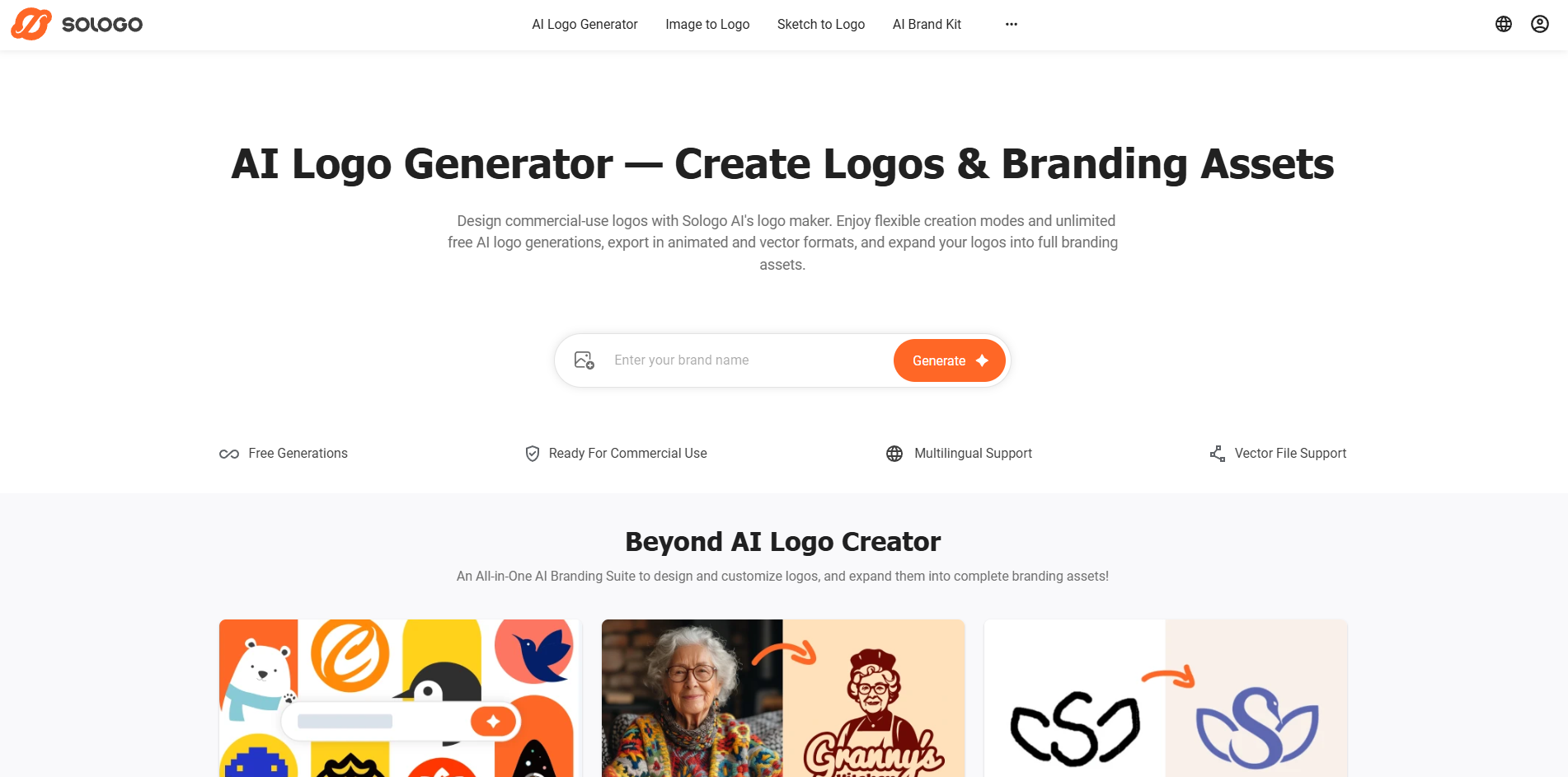
LogoDiffusion (formerly Logojoy) uses AI to create logos based on your preferences and feedback. Their system learns from your choices, refining suggestions as you interact with different options.
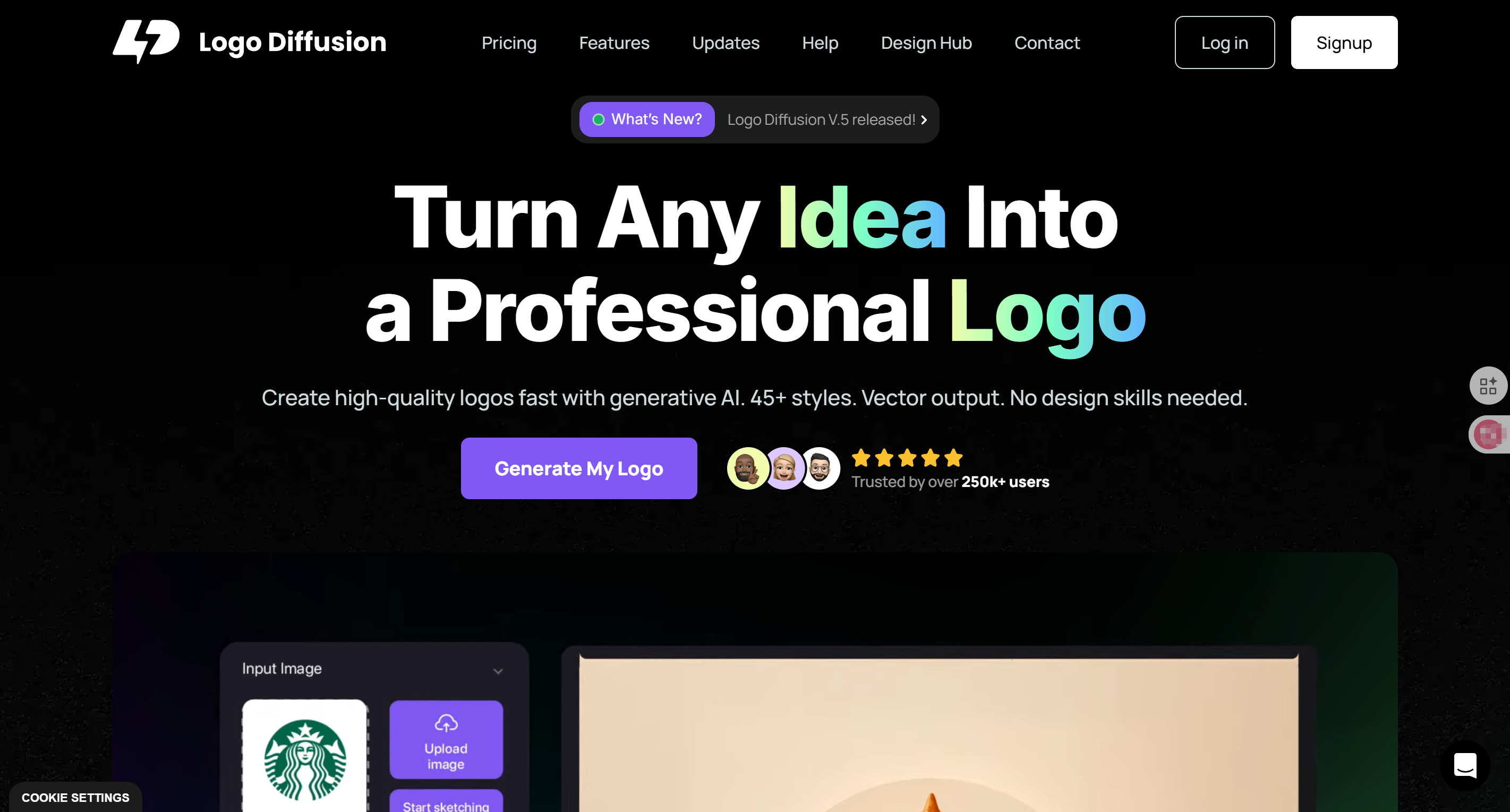
logomaster.ai leverages their extensive design database to offer AI-assisted logo creation alongside traditional design tools.
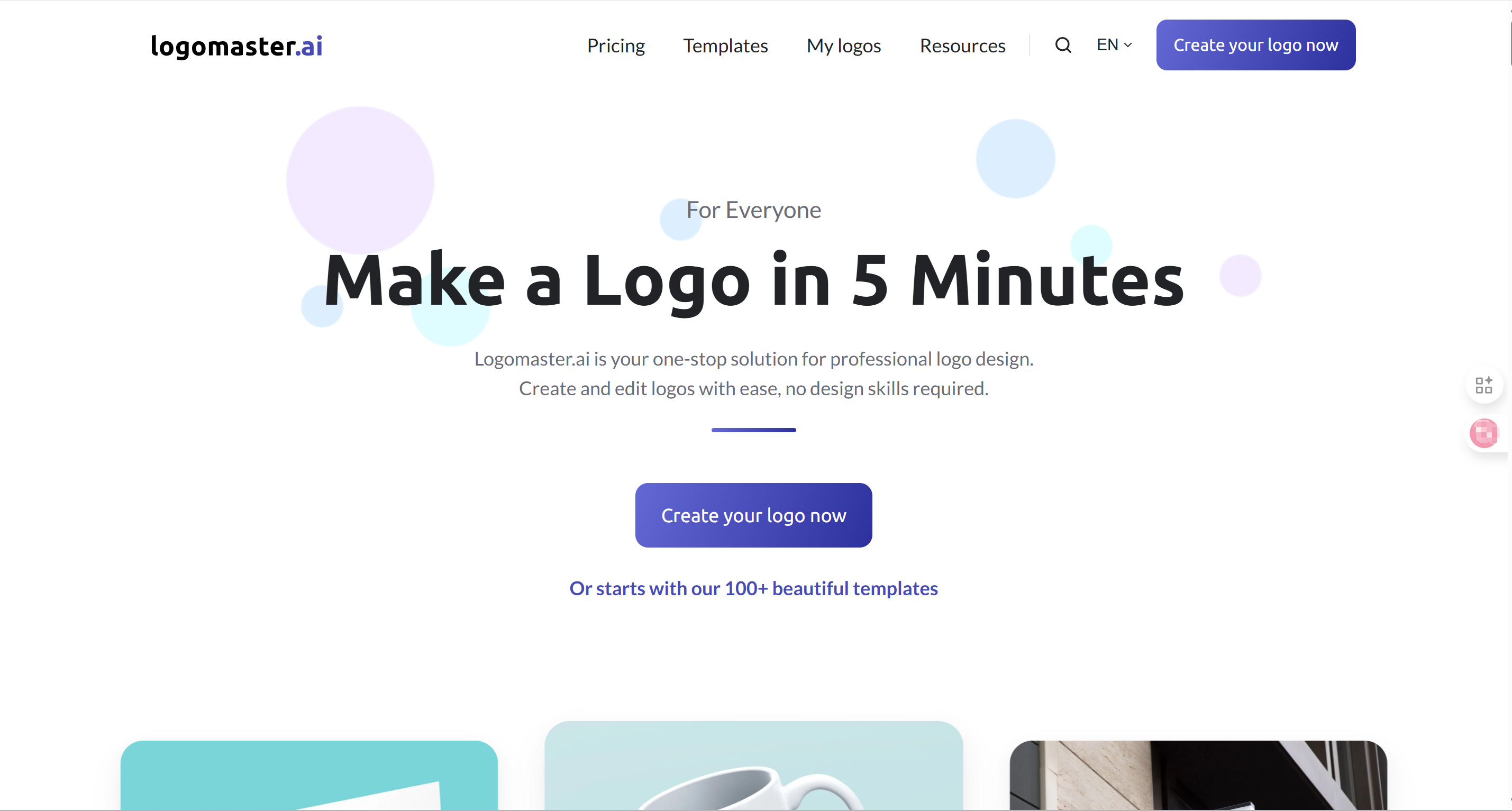
Hatchful by Shopify is a free AI logo generator that helps entrepreneurs and online store owners create professional, on-brand logos in minutes. Integrated within the Shopify ecosystem, it makes building a consistent and recognizable brand identity effortless for e-commerce businesses.
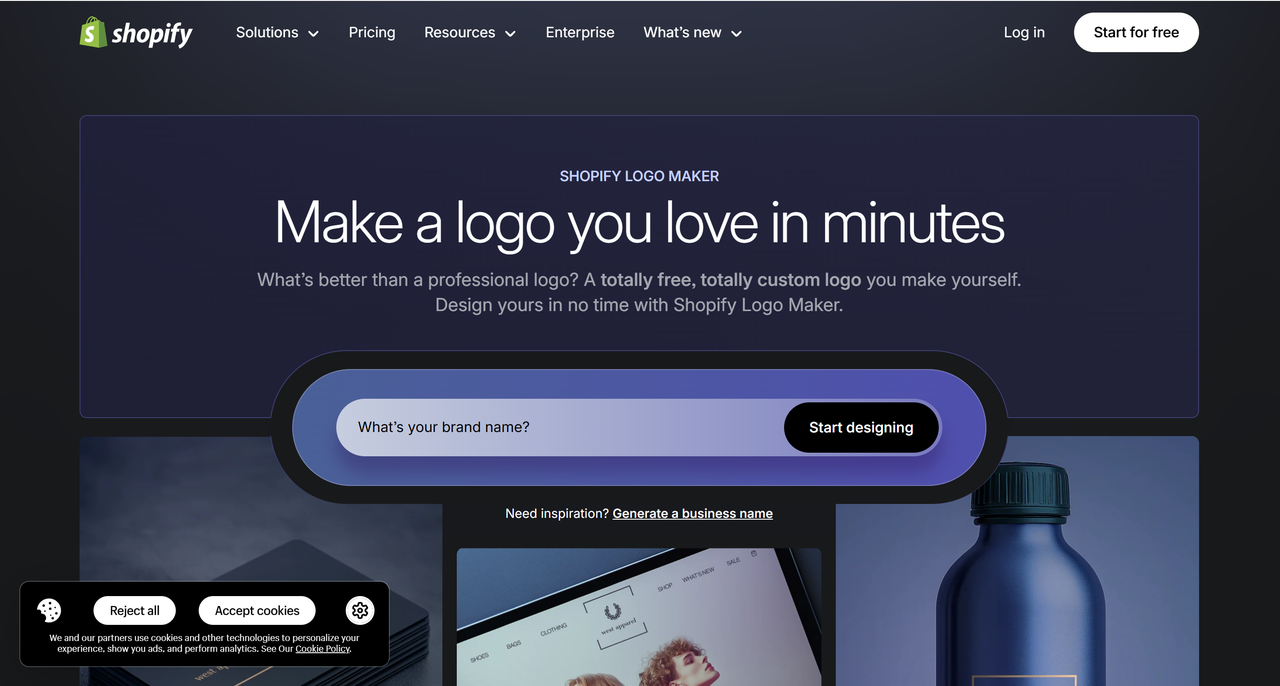
Tailor Brands combines AI generation with brand identity packages, offering logos alongside business cards and social media templates.
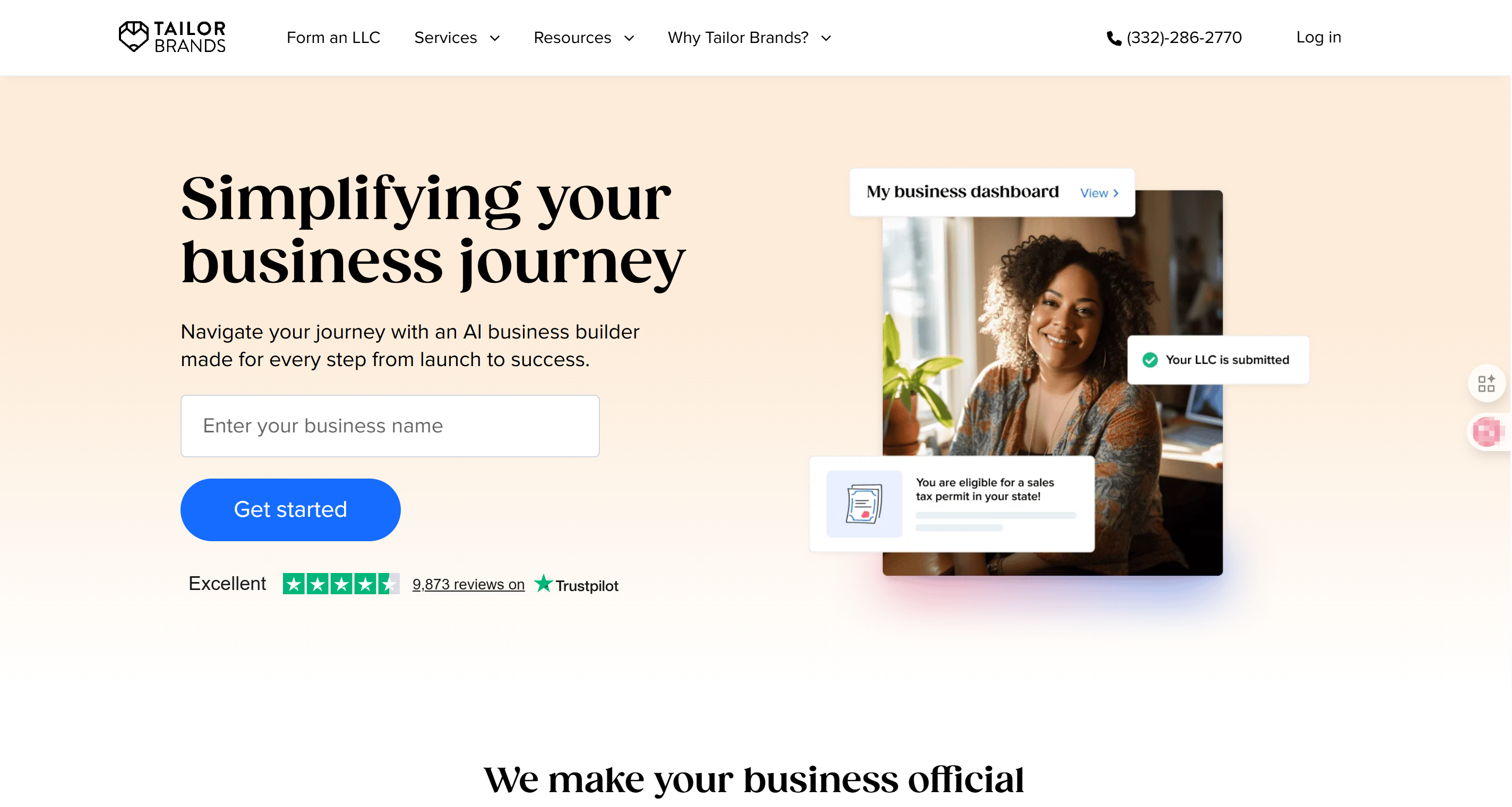
Advantages of AI Logo Generators
More and more people are turning to AI for logo design — and it’s not a coincidence. AI-powered logo makers can generate high-quality visuals in just seconds while adapting each design to match your brand’s unique identity. The following advantages explain why AI-generated logos are becoming such a popular choice for businesses and creators alike.
- Speed and Efficiency: The most obvious advantage is speed. You can have a professional-looking logo in minutes rather than weeks. This rapid turnaround is invaluable for startups needing to launch quickly or established businesses requiring immediate rebranding.
- Cost-Effectiveness: AI generators typically cost between $10-$100, compared to $500-$5000+ for professional human designers. This affordability makes professional-quality logos accessible to small businesses and entrepreneurs with limited budgets.
- Unlimited Iterations: Unlike human designers who may charge for additional revisions, AI platforms often allow unlimited experimentation. You can try dozens of variations without additional costs.
- 24/7 Availability: AI doesn't sleep, take vacations, or have creative blocks. You can work on your logo at 3 AM if inspiration strikes.
- Consistency: AI generates logos based on proven design principles, ensuring your final product adheres to fundamental design rules.
- Instant Previews: See how your logo looks across different applications – business cards, websites, merchandise – before making final decisions.
Limitations of AI Logo Generators
Of course, AI isn’t perfect and can make the occasional mistake. But don’t worry—think of it as a new assistant just starting out. With a little patience and guidance, you’ll soon find it saving you a lot of time and boosting your productivity more than you ever expected!
- Generic Results: AI systems work with existing patterns and combinations. While efficient, this approach can produce logos that feel familiar or lack distinctive character.
- Limited Conceptual Thinking: AI excels at combining existing elements but struggles with abstract concepts, storytelling, or complex brand narratives that require human interpretation.
- Industry Saturation: Popular AI platforms may generate similar logos for businesses in the same industry, potentially leading to brand confusion.
- Customization Constraints: While AI offers various options, you're ultimately limited to the platform's capabilities and pre-programmed design elements.
- No Strategic Consultation: AI can't discuss your brand strategy, target audience psychology, or long-term marketing goals – crucial factors in effective logo design.
Human Designers: The Creative Craftsmen
The Human Design Process
Working with human designers involves a collaborative journey that typically unfolds over several weeks. The process usually includes:
- Discovery Phase: Designers conduct in-depth interviews about your business, values, target audience, and competitive landscape. This foundation informs every design decision.
- Research and Concept Development: Designers research your industry, analyze competitors, and develop multiple conceptual directions based on strategic insights.
- Initial Presentations: You'll receive 2-5 distinct logo concepts, each with rationale explaining the design thinking behind creative choices.
- Refinement and Iteration: Based on your feedback, designers refine chosen concepts, adjusting colors, typography, and layouts until the perfect solution emerges.
- Finalization and Delivery: The final logo is prepared in multiple formats, colors, and sizes, often accompanied by brand guidelines for consistent application.
Types of Human Designers
- Freelance Designers: Independent professionals offering personalized service and competitive pricing. Platforms like Upwork, Fiverr, and 99designs connect businesses with talented freelancers worldwide.
- Design Agencies: Full-service firms providing comprehensive brand identity services, from logo design to complete brand strategy and implementation.
- In-House Designers: Some larger companies employ dedicated design teams for ongoing brand development and maintenance.
- Specialized Logo Designers: Professionals who focus exclusively on logo and brand identity design, often developing deep expertise in specific industries.
Advantages of Human Designers
AI logo generators are getting smarter, but they’re not ready to replace real designers just yet. Human creativity, aesthetic judgment, and brand insight remain unmatched — here’s why designers still hold the edge.
- Unique Creative Vision: Human designers bring personal experiences, cultural insights, and creative intuition that AI cannot replicate. They can develop truly original concepts that reflect your brand's unique personality.
- Strategic Thinking: Experienced designers understand brand strategy, market positioning, and consumer psychology. They create logos that support broader business objectives.
- Storytelling Capability: Humans excel at translating complex brand narratives into visual symbols. They can embed meaning, emotion, and cultural references that resonate with specific audiences.
- Collaborative Partnership: Working with human designers involves ongoing dialogue, feedback, and refinement. This collaboration often leads to solutions neither party initially envisioned.
- Industry Expertise: Many designers specialize in specific sectors, bringing deep understanding of industry conventions, audience expectations, and competitive landscapes.
- Comprehensive Brand Development: Human designers often provide additional services like brand guidelines, color palettes, typography recommendations, and application examples.
Limitations of Human Designers
Even though human designers still hold the advantage for now, their workflows still come with some common challenges, such as:
- Higher Costs: Professional logo design typically ranges from $500-$5000+, with premium agencies charging significantly more for comprehensive brand identity packages.
- Longer Timelines: Human design processes usually take 2-6 weeks, depending on project complexity and revision cycles.
- Subjective Results: Design is inherently subjective. You might not connect with a designer's aesthetic style or creative direction.
- Limited Revisions: Most designers include 2-3 revision rounds in their base pricing, charging additional fees for extensive changes.
- Availability Constraints: Popular designers often have waiting lists, and project timelines depend on their current workload.
- Communication Challenges: Misaligned expectations or poor communication can lead to unsatisfactory results and project delays.
Detailed Comparison: AI Logo Generator vs Human Designer
Cost Analysis Deep Dive
When evaluating costs, consider the total investment beyond initial design fees:
- Platform fees: $10-$100
- Additional file formats: Often included
- Trademark searches: Usually extra ($50-$200)
- Future modifications: Typically free or low-cost
- Design fees: $500-$5000+
- Additional revisions: $50-$200 per round
- File format packages: Often included
- Brand guidelines: $200-$1000 additional
- Future modifications: Hourly rates ($50-$150)
Quality and Originality Comparison
AI Strengths:- Consistent adherence to design principles
- Professional typography and color combinations
- Scalable across different applications
- Trend-aware design elements
- Original conceptual thinking;
- Cultural and contextual relevance;
- Emotional resonance;
- Strategic brand alignment;
- Unique artistic interpretation.
Industry-Specific Considerations
Technology Startups- AI Advantage: Fast iteration cycles match startup pace; cost-effective for MVP launches.
- Human Advantage: Strategic positioning crucial for investor presentations and market differentiation.
- AI Advantage: Templates ensure professional appearance and industry compliance.
- Human Advantage: Trust and credibility paramount; custom design conveys expertise and reliability.
- AI Advantage: Quick concept exploration and style experimentation.
- Human Advantage: Artistic authenticity expected; original creative vision essential for credibility.
- AI Advantage:Platform integration and multi-format optimization built-in.
- Human Advantage: Brand differentiation crucial in crowded marketplaces.
- AI Advantage: Budget-friendly option for small businesses.
- Human Advantage: Local cultural understanding and community connection important.
Making the Right Choice: Decision Framework
Choose AI Logo Generators When:
- Budget is Primary Concern: Your logo budget is under $200.
- Speed is Critical: You need a logo within 24-48 hours.
- Simple Brand Identity: Your business model is straightforward without complex positioning needs.
- Testing Phase: You're validating a business concept and need temporary branding.
- DIY Preference: You enjoy hands-on control over the design process.
- Standard Industry: Your business fits common industry templates well.
Choose Human Designers When:
- Brand Strategy is Complex: Your positioning requires nuanced understanding.
- Long-term Investment: This logo will represent your brand for years.
- Competitive Differentiation: You need to stand out in a crowded market.
- Premium Brand Positioning: Your target audience expects sophisticated design.
- Cultural Sensitivity: Your brand serves diverse or specific cultural communities.
- Comprehensive Brand Development: You need complete brand identity systems.
Hybrid Approaches
Some businesses successfully combine both approaches:
- AI for Exploration: Use AI generators to explore style directions and gather initial ideas, then work with human designers to refine and customize the best concepts.
- Human for Strategy, AI for Execution: Collaborate with designers on brand strategy and concept development, then use AI tools for rapid iteration and application across different formats.
- Phased Development: Start with AI-generated logos for immediate needs, then invest in human design as your business grows and brand requirements become more sophisticated.
Real-World Case Studies
Case Study 1: Tech Startup Success with AI
When a small SaaS startup was racing against the clock to launch its MVP, they didn’t have weeks to wait for logo drafts. So, they turned to Sologo AI, an AI logo generator, and within minutes they had multiple professional concepts to choose from. They picked a clean, modern design that perfectly reflected their innovative spirit. The startup launched on schedule, then later brought in human designers to refine the brand after landing their Series A funding.
Takeaway: AI gave them the speed and flexibility they needed to hit the market fast — proof that sometimes “good enough now” beats “perfect later.”
Case Study 2: Restaurant Chain's Human Designer Investment
A local restaurant getting ready to expand into new cities knew they needed more than just a logo — they needed a story. They partnered with a designer who specialized in food branding, someone who could capture the local culture and the restaurant’s family heritage in one visual identity. The result? A warm, recognizable logo that quickly became part of the community’s identity. Customers saw it and instantly felt a sense of familiarity and pride.
Takeaway: In this case, no AI could match the emotional depth and cultural insight a human designer brought to the table.
Case Study 3: E-commerce Brand's Hybrid Approach
An online fashion brand wanted to build its visual identity fast — but also wanted something truly original. They started by using AI logo generators to explore different styles and directions, gathering inspiration and defining their aesthetic. Once they found a direction they loved, they teamed up with a freelance designer to fine-tune the final version. The result was a stylish, scalable logo that looked great across their entire brand ecosystem — from packaging to Instagram.
Takeaway: The hybrid approach hit the sweet spot: AI for speed and experimentation, humans for refinement and emotional touch.
Future Trends and Predictions
AI Evolution
AI design tools are evolving fast — and the next generation looks even more exciting. Future AI systems will have a deeper understanding of brand stories and cultural context, meaning your logo won’t just look good, it’ll actually connect with your audience on a meaningful level.
We’re also seeing huge improvements in customization and integration. Soon, you’ll be able to fine-tune every detail of your logo with intuitive editing tools while connecting seamlessly to website builders, marketing software, and business platforms. And perhaps most importantly, AI won’t replace human designers — it’ll collaborate with them, serving as a creative partner rather than a competitor.
Human Designer Adaptation
Designers aren’t being left behind in this transformation — far from it. Many professionals are shifting their focus toward strategic design, brand storytelling, and crafting complex visual systems that go beyond what AI can do alone.
At the same time, they’re embracing AI tools to speed up routine work, freeing them to focus on the creative decisions that really matter. This balance of efficiency and artistry is reshaping the design profession into something more thoughtful, personalized, and long-term.
Market Convergence
Looking ahead, the future of design will likely be a blend of both worlds. AI will take care of the quick, routine design tasks, while human designers will handle strategy, creativity, and emotional storytelling — the parts machines can’t truly replicate. When AI and human creativity work together, you get the best of both worlds: speed and originality.
Conclusion: Your Logo, Your Choice
The decision between AI logo generators and human designers isn't about choosing the "better" option – it's about selecting the right solution for your specific situation, goals, and constraints.
AI logo generators like Sologo.AI have democratized professional design, making high-quality logos accessible to businesses of all sizes. They excel in speed, affordability, and consistency, making them ideal for startups, small businesses, and situations requiring rapid deployment.
Human designers bring irreplaceable value through strategic thinking, creative originality, and deep brand understanding. They're essential when your brand requires sophisticated positioning, cultural sensitivity, or unique creative vision.
The most successful businesses often recognize that logo design is just one component of broader brand development. Whether you choose AI efficiency or human creativity, ensure your logo supports your overall brand strategy and connects authentically with your target audience.
As both AI capabilities and human design services continue evolving, the gap between them may narrow in some areas while widening in others. The key is understanding what your brand truly needs and choosing the approach that best serves those requirements.
Remember, your logo will represent your business across countless interactions with customers, partners, and stakeholders. Whether created by artificial intelligence or human hands, it should reflect your brand's values, appeal to your target audience, and support your business objectives for years to come.
The choice is yours – and now you have the knowledge to make it confidently.